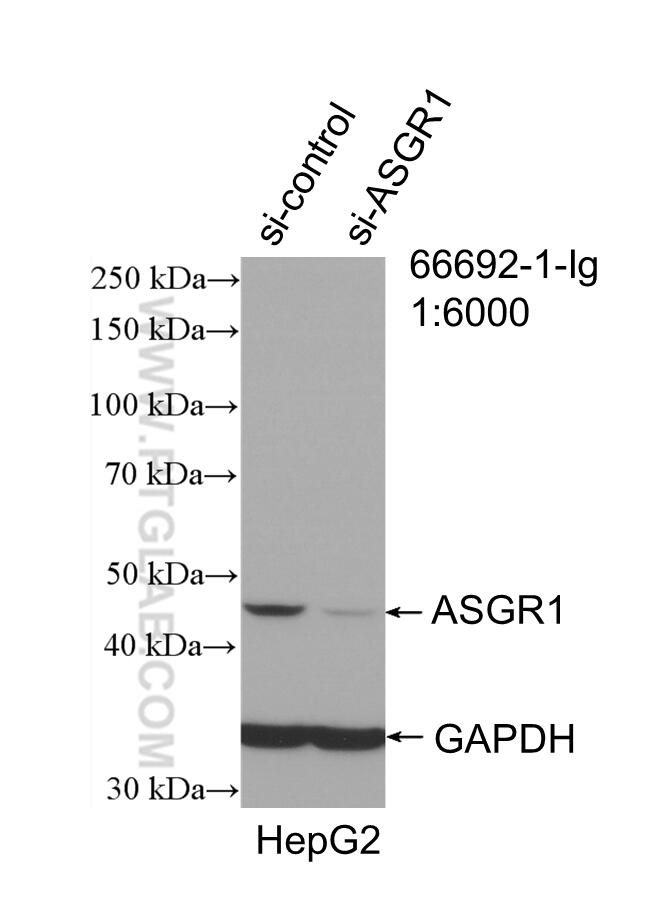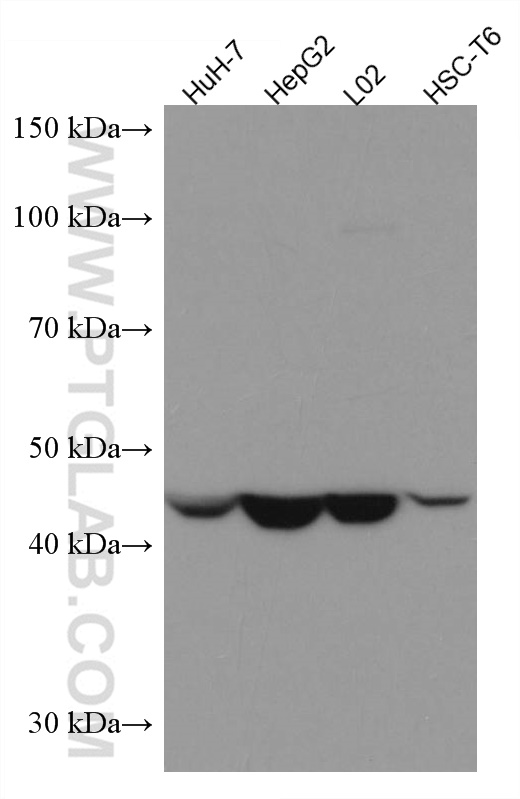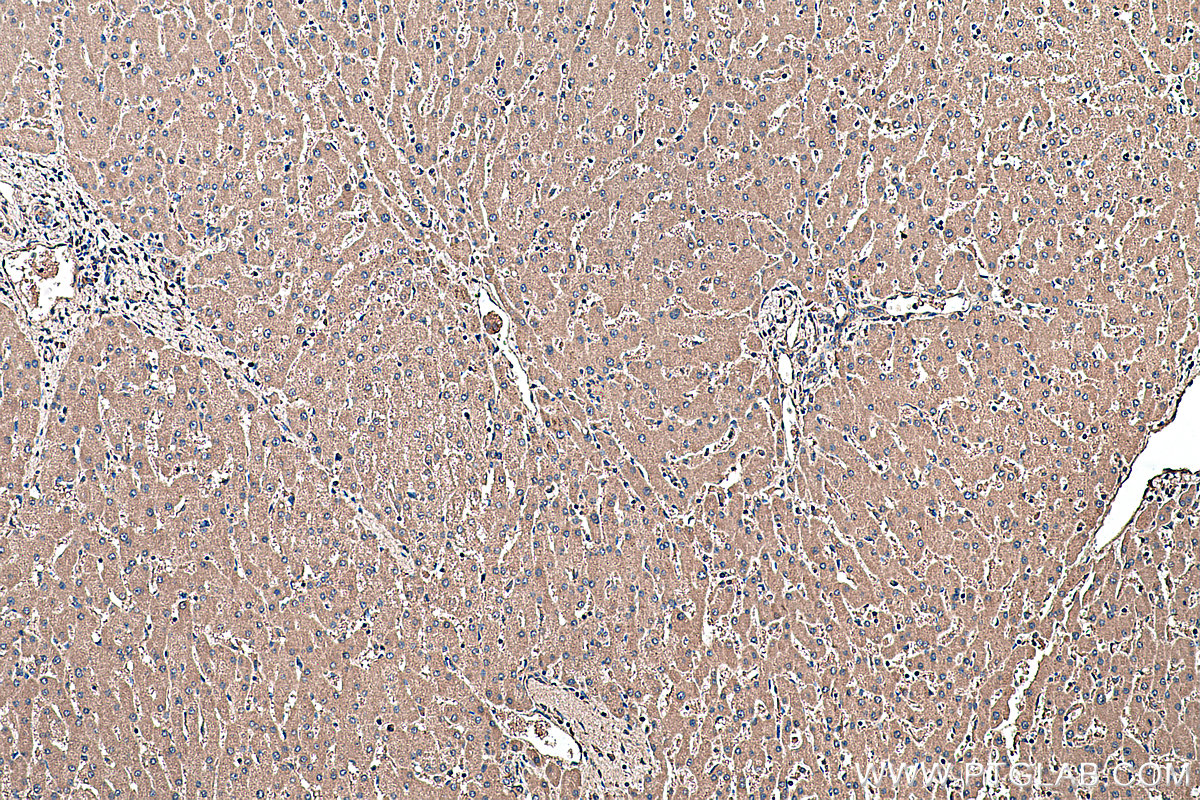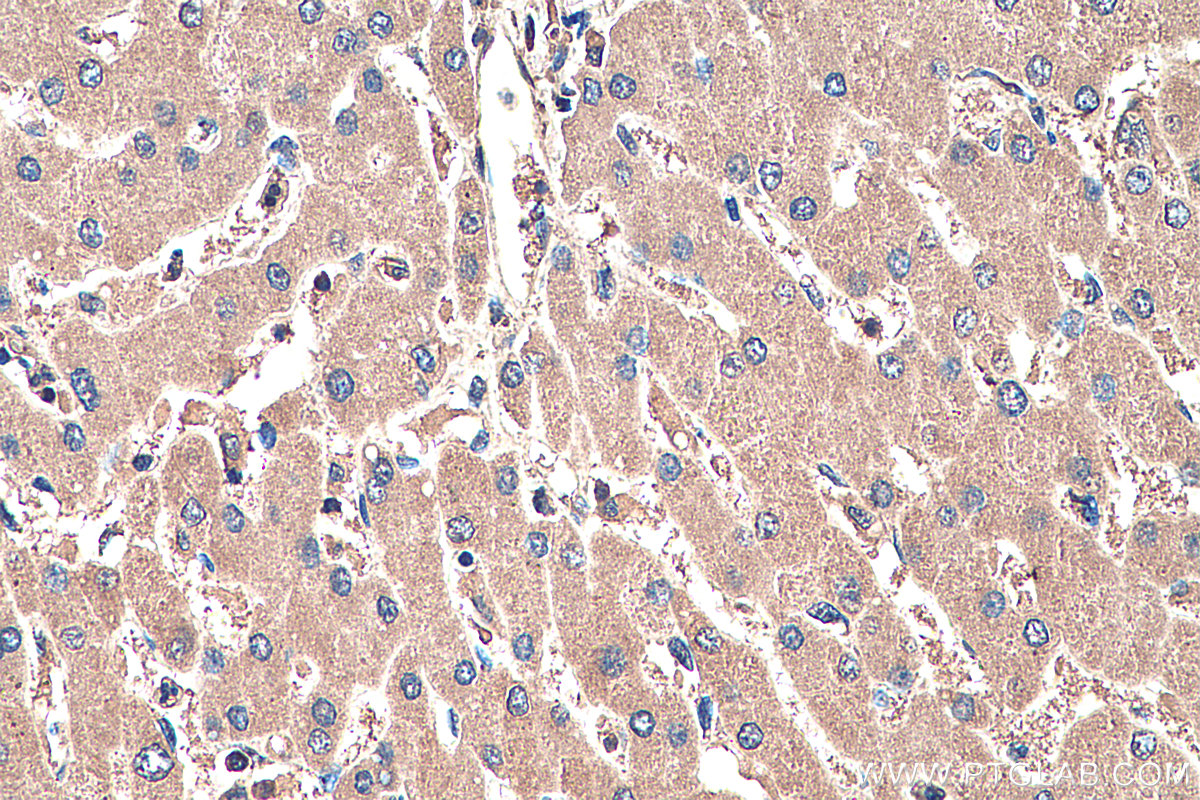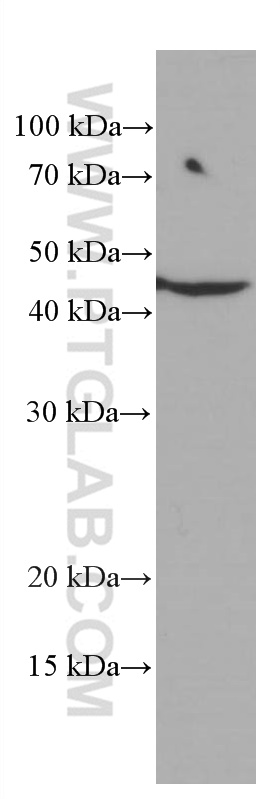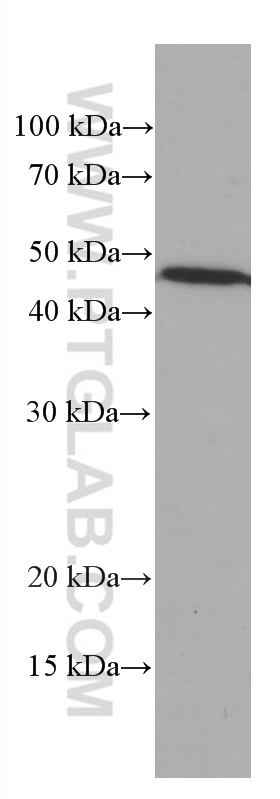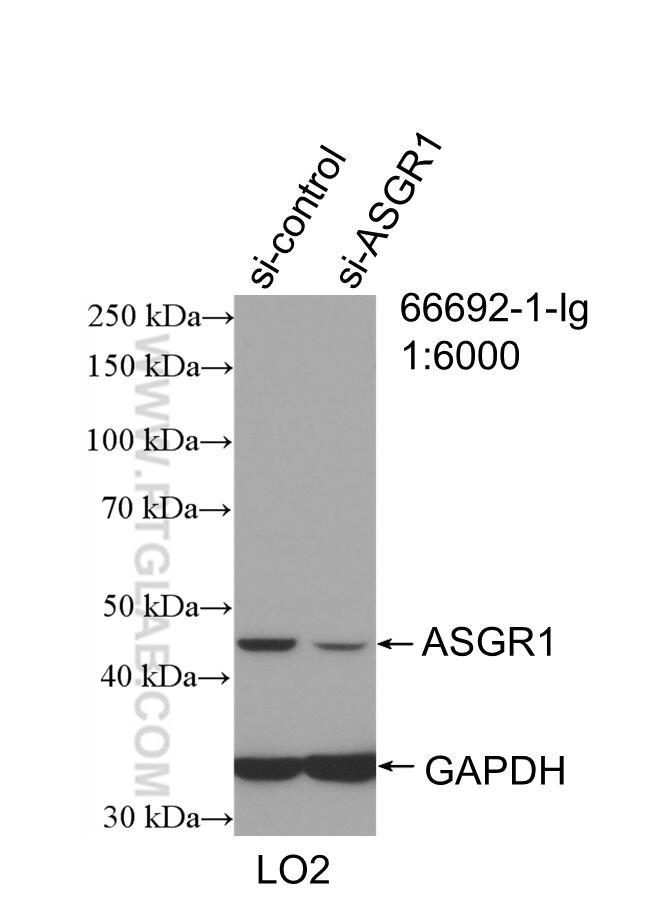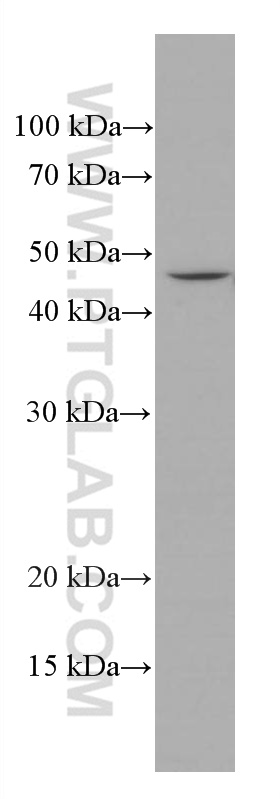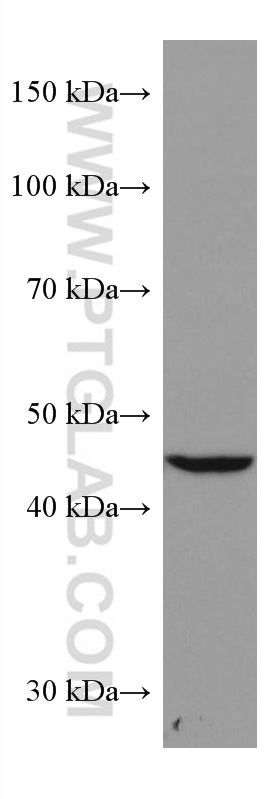验证数据展示
产品信息
66692-1-PBS targets ASGR1 in WB, IHC, Indirect ELISA applications and shows reactivity with human, mouse, rat, pig samples.
| 经测试应用 | WB, IHC, Indirect ELISA Application Description |
| 经测试反应性 | human, mouse, rat, pig |
| 免疫原 |
CatNo: Ag2310 Product name: Recombinant human ASGR1 protein Source: e coli.-derived, PGEX-4T Tag: GST Domain: 1-291 aa of BC032130 Sequence: MTKEYQDLQHLDNEESDHHQLRKGPPPPQPLLQRLCSGPRLLLLSLGLSLLLLVVVCVIGSQNSQLQEELRGLRETFSNFTASTEAQVKGLSTQGGNVGRKMKSLESQLEKQQKDLSEDHSSLLLHVKQFVSDLRSLSCQMAALQGNGSERTCCPVNWVEHERSCYWFSRSGKAWADADNYCRLEDAHLVVVTSWEEQKFVQHHIGPVNTWMGLHDQNGPWKWVDGTDYETGFKNWRPEQPDDWYGHGLGGGEDCAHFTDDGRWNDDVCQRPYRWVCETELDKASQEPPLL 种属同源性预测 |
| 宿主/亚型 | Mouse / IgG1 |
| 抗体类别 | Monoclonal |
| 产品类型 | Antibody |
| 全称 | asialoglycoprotein receptor 1 |
| 别名 | asialoglycoprotein receptor 1, HL-1, Asgpr1, ASGP-R 1, ASGPR 1 |
| 计算分子量 | 291 aa, 33 kDa |
| 观测分子量 | 42-46 kDa |
| GenBank蛋白编号 | BC032130 |
| 基因名称 | ASGR1 |
| Gene ID (NCBI) | 432 |
| RRID | AB_2882046 |
| 偶联类型 | Unconjugated |
| 形式 | Liquid |
| 纯化方式 | Protein G purification |
| UNIPROT ID | P07306 |
| 储存缓冲液 | PBS only, pH 7.3. |
| 储存条件 | Store at -80°C. The product is shipped with ice packs. Upon receipt, store it immediately at -80°C |
背景介绍
Asialoglycoprotein receptor (ASGPR), also known as the hepatic galactose/N-acetylglucosamine (GlcNAc) receptor or Ashwell receptor, is a C-type lectin expressed exclusively in hepatic parenchymal cells. ASGPR consists of two subunits, a major subunit (ASGR1, HL-1) and a minor subunit (ASGR2, HL-2), and specifically recognizes terminal β-linked galactose or GlcNAc on circulating glycoproteins or cells. This receptor plays a critical role in serum glycoprotein homeostasis by mediating the endocytosis and lysosomal degradation of glycoproteins that contain terminal galactose or GlcNAc residues. ASGPR may facilitate hepatic infection by multiple viruses including hepatitis B, and is also a target for liver-specific drug delivery.

